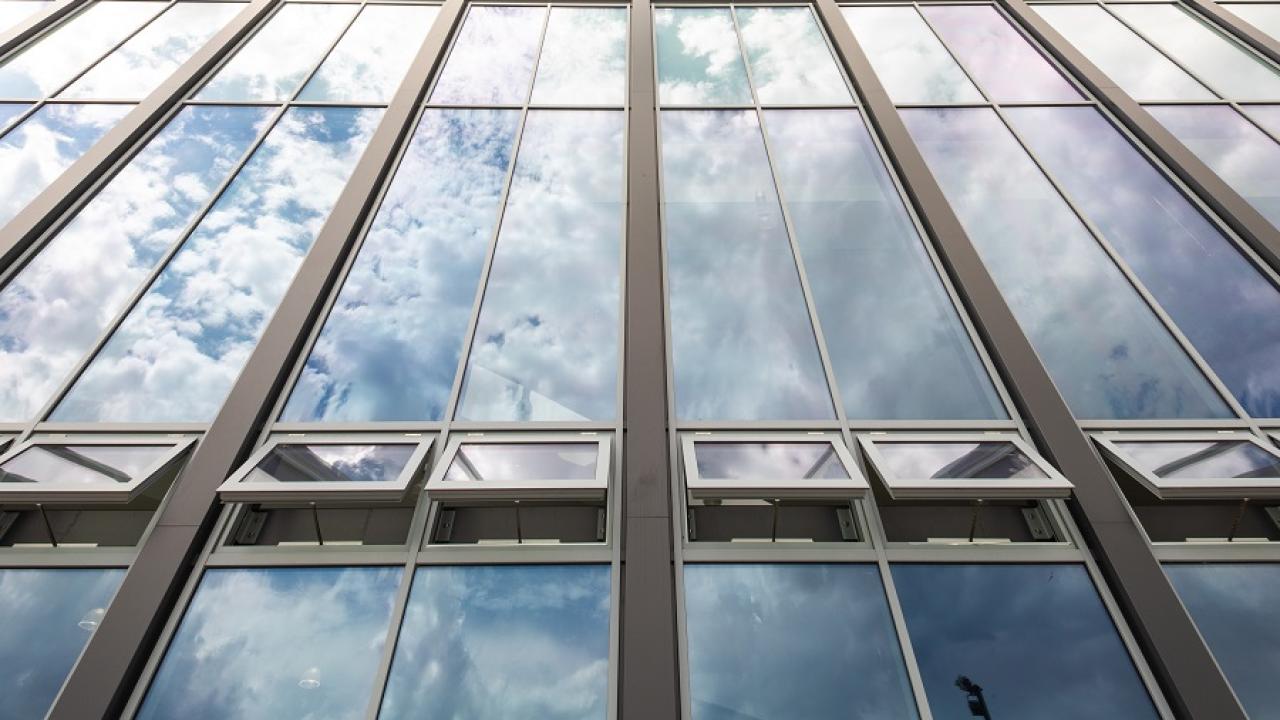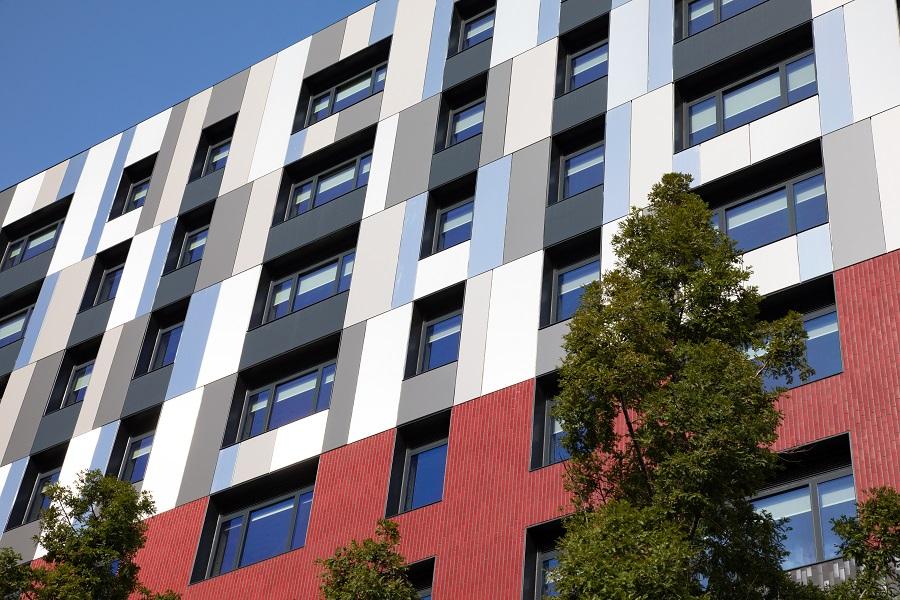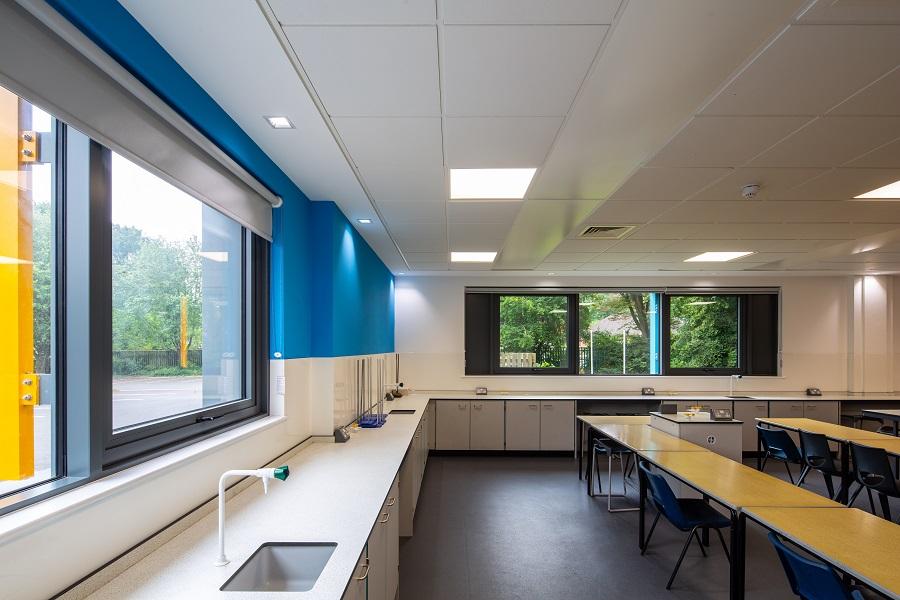

Aluminium window systems
From offering excellent energy-efficiency and durability to being endlessly recyclable, aluminium window systems are the ideal choice for building envelope designs that look to combine style with sustainability.
James Keeling-Heane, sales director from Senior Architectural Systems takes a closer look at why specifiers should consider aluminium windows systems for their next project...
Fenestration systems play a key role in creating building facades that not only look fantastic but that also perform well in terms of thermal-efficiency and maintenance requirements. The aesthetic appeal of aluminium is on a par with its sustainable credentials and through careful consideration of the types of window systems available, specifiers can make important savings, both financial and environmental.

Opening up healthier interiors
Visually, aluminium is ideal for creating sleek facades that minimise sight lines and maximise the use of natural light. The use of daylighting is an important consideration when creating interior design schemes that have a positive influence on health and wellbeing, making slimline aluminium windows, doors and curtain walling systems ideal for education and healthcare settings, as well as commercial and residential projects.
The inherent strength of the aluminium allows larger expanses of glazing to be supported within much slimmer frames. This creates an aesthetic that is appropriate for both old and new buildings, with our own slimline Ali VU aluminium window system ideally suited to both new build schemes and those that require a high performance replacement for traditional steel windows.
As well as daylighting, aluminium windows systems can also contribute to a building’s use of natural ventilation. Although this can be quite simply achieved by opening a window, it’s important to consider the effect this will have on the interior temperature of a room, who will be operating the window, and perhaps most importantly, how injuries from trapped fingers or falls from height can be avoided. The use of trickle vents, which are small openings in window systems, allow fresh air to circulate in a room even when the window is in a closed or locked position. These can be operated manually, or set up to work automatically so that they will open and close at certain times of the day to allow for greater control over the ambient interior temperature.
It’s also important to consider the style of the window. Tilt and turn windows are very popular as they can provide ventilation with restricted access to prevent people, children in particular, from climbing out - making this style of window particularly useful for high-rise residential schemes.
Parallel push style aluminium windows are also a great solution. With hinges on all sides of the frame, this type of window can be easily pushed open and yet will remain parallel to the wall. This enables rooms to be safely ventilated, with the limited opening helping to reduce the risk of falls from the window. Aesthetically, the use of push parallel style windows can also help to create a more uniform façade.

Sustainability in the frame
The use of daylighting techniques and natural ventilation can help reduce reliance on artificial light sources and air conditioning but one of the biggest challenges of creating a more energy-efficient building is minimising the amount of heat lost through doors and windows.
Aluminium fenestration systems are sustainable as they offer ‘cradle to cradle’ recyclability. Thermally-broken aluminium windows can also help achieve lower U-values – and when it comes to U-value ratings, less is more and the lower the figure, the more heat is retained.
Most thermally-broken aluminium windows systems use a strong polyamide as an insulator to prevent heat loss between the inner and outer frame but we have raised the bar higher: with the development of PURe® aluminium window system it has also been possible to create a system that incorporates an even more effective thermal barrier made from expanded polyurethane foam; a material more commonly used in insulation products.
The development of thermally-efficient aluminium window systems has provided specifiers with the additional advantage of having greater flexibility in terms of the positioning of radiators. Traditionally radiators would be installed in the coldest part of the room which would usually be along an exterior wall where cold air would enter via the windows. The use of more thermally-efficient windows removes these limitations, allowing greater freedom when planning interior layouts.
Low maintenance solutions
Aluminium is naturally robust, highly durable and requires very little maintenance, making aluminium fenestration systems ideally suited for high traffic areas. Thermally-efficient aluminium window systems can also offer a cost-effective alternative to using energy efficient triple-glazing which, when used in a busy environment such as a school, has a higher risk of breaking and would be more expensive to replace.
The exceptional durability of aluminium can be further increased through the use of powder-coating, which can provide a thicker and stronger finish than traditional paint and gives aluminium fenestration systems extra protection from the elements and increased resistance from fading and corrosion. With the ability to create the full range of standard RAL colours or specific colours for a more bespoke solution, powder coated aluminium frames can make a real design statement.
To discover more about the benefits of aluminium window systems please click here
